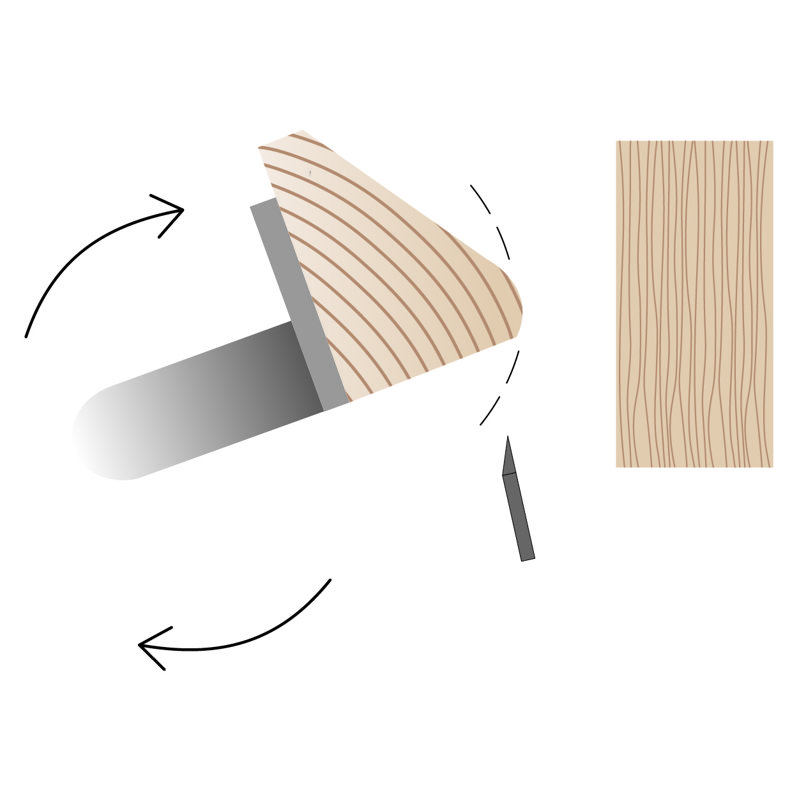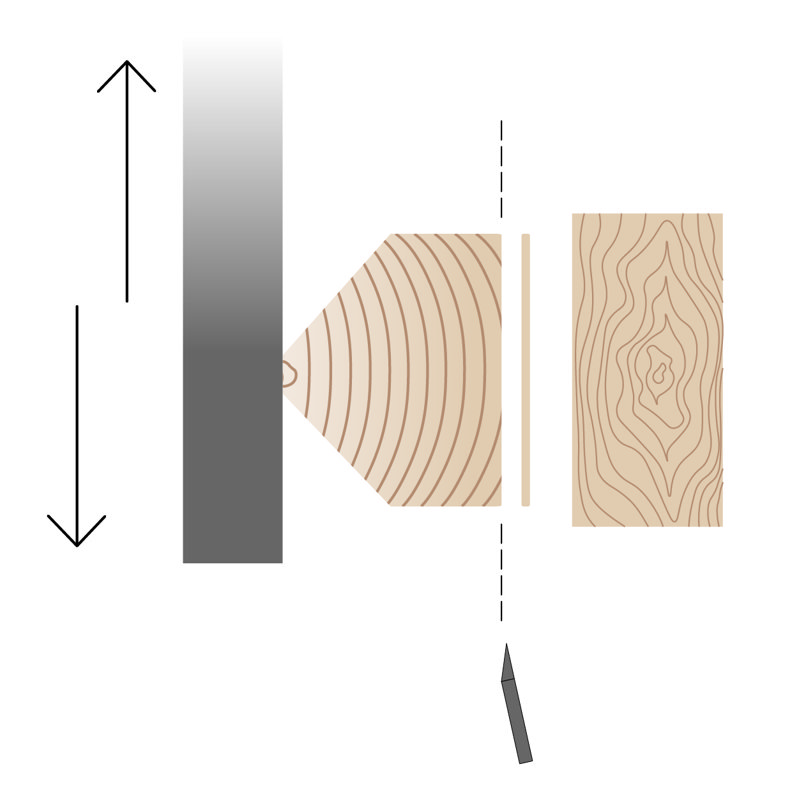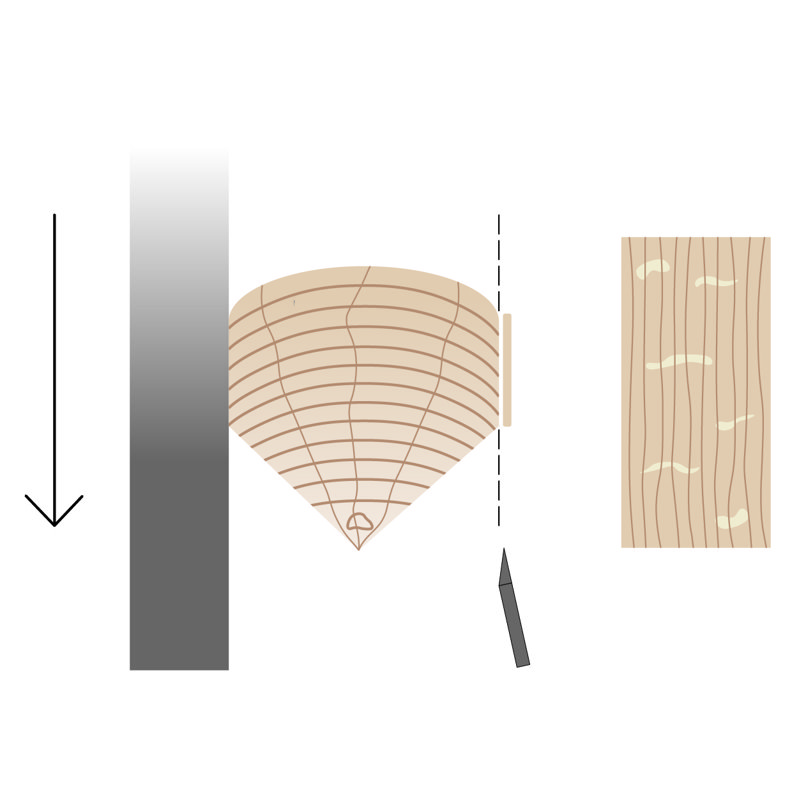Veneer slicing techniques
The way log is sliced or peeled determines the grain pattern in a sheet.
Crown cut, quarter cut and rift cut are the three most common slicing techniques.
Quarter cut
The log is cut in quarters, and each flitch is then straight sliced, approximately at right angles to the growth rings. This generally produces a veneer with a relatively uniform linear vertical grain.
Rift Cut
This techinque is used mainly for oak species, which have medullary rays radiating from the centre of the log like the spokes of a wheel. The log is quarter cut and then mounted on a lathe, taking curved slices slightly across the medullary rays. This accentuates the vertical grain and minimises the flake fugures of the rays.

Crown cut
The log is cut in half, and the half log or flitch is then is then sliced straight across, parallel to a line through the centre of the log and tangential to the growth rings.
This generally produces a veneer with a central area of strong figurative grain and a more linear affect at each edge.

